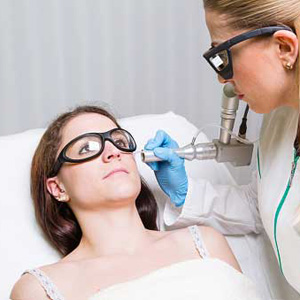Our practice has “laser” in its name for good reason. Today’s laser treatments are precise, safe, reliable, well-tolerated, and quick. This versatile technology removes tattoos and unwanted hair as effectively as it removes sun damage and improves signs of aging on the face and body. Dr. Koreen and the team at the Dermatology & Cosmetic Laser Center also use laser therapy for facial wart removal in Huntington NY. Since warts on the face are highly visible, we understand you may not want to take a “wait and see” approach, hoping the growth will resolve on its own. As you get older, warts tend to linger longer. Plus, lasers can treat these noncancerous growths when products and other procedures fail.

You may have a lot of questions about lasers and other approaches to wart removal, and we encourage you to contact our office. Meanwhile, we’ve answered a few frequently asked questions about laser therapy below.
We Are always available to help you.... Call Us Today
New Patients: (631) 417-3300 | Existing Patients: (631) 421-4398 Book an Appointment- It may take more than one treatment to get the results you desire.
- Larger and deeper warts may require multiple sessions for complete removal.
- We offer many payment and financing options to reduce any financial difficulties you may be experiencing related to the cost of treatment.
- While lasers are very effective, there is no cure for warts due to their viral nature.
- Because warts can develop so quickly, it’s important to contact us promptly should they return.
Dr. Koreen and the team emphasize prevention. Since warts are highly contagious, it’s important to take care when interacting with people who have warts, or with using any items those people touch. Be especially vigilant should you have cuts or open sores, because the virus can enter through wounds. It’s also important to get prompt treatment for these growths from professional skin specialists, because some types of skin cancers like squamous cell carcinoma can look like warts. SCCs also tend to show up on sun-exposed areas, such as the face, ears, lips, neck, and hands. For professional care you can trust, call (631) 417-3300 to schedule a consultation at the Dermatology & Cosmetic Laser Center.









